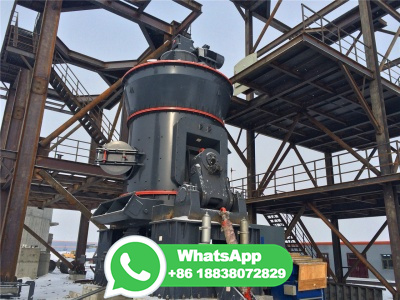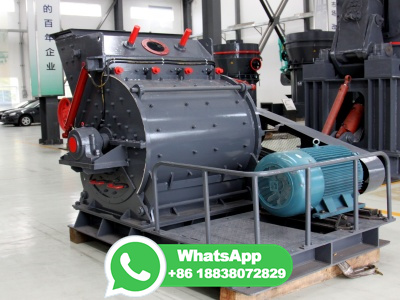
Iron ore tailings (IOTs) are byproducts of the iron mining industry that have gained significant attention in recent years due to their potential for comprehensive utilization. This study investigates how blending steel slag with IOTs (a siliceous raw material) instead of lime (a calcareous raw material) affects slurry foaming properties, mechanical properties, and reaction mechanisms of ...
WhatsApp: +86 18838072829
If iron ore is reduced with H 2, instead of with coke or mixtures of H 2 and CO, water is formed instead of CO to the traditional BF route, direct reduction of iron with H 2 is kinetically favourable [7] and could reduce energy demand of the steel plant since there is no need for onsite coke production, sintering and pelletization [8].However, reduction of iron ore with H 2 is an ...
WhatsApp: +86 18838072829
A new route for making steel from iron ore based on the use of hydrogen to reduce iron oxides is presented, detailed and analyzed. The main advantage of this steelmaking route is the dramatic reduction (90% off) in CO2 emissions compared to those of the current standard blastfurnace route. The first process of the route is the production of hydrogen by water electrolysis using CO2lean ...
WhatsApp: +86 18838072829
Sponge iron retains any impurities from the ore itself, meaning only highgrade ore can be employed for direct reduction. In Dr Sadoway's process impurities are retained instead in the electrolyte.
WhatsApp: +86 18838072829
Midrex® Technologies (Midrex® process) and Tenova (Energiron/HYL process), respectively, demonstrated the direct reduction of iron ore with large fractions of hydrogen in pilot plants. As early as the 1990s, the operation of the Energiron/HYL process with a hydrogen fraction in the reduction gas of x H 2 = was demonstrated on an ...
WhatsApp: +86 18838072829
Steel can be produced via two main processes: either using an integrated blast furnace (BF)/basic oxygen furnace (BOF) or an electric arc furnace (EAF). While integrated players produce steel from iron ore and need coal as a reductant, EAF producers use steel scrap or direct reduced iron (DRI) as their main raw material.
WhatsApp: +86 18838072829
In that work, we chose a relative low temperature compared with those used in industrial shaft furnaces (viz. °C) to monitor the intermediate microstructural changes prior to complete reduction and associate them with the ratelimiting steps of this process. Solidstate direct reduction of iron ore pellets using molecular hydrogen ...
WhatsApp: +86 18838072829
Directreduced iron and its more transportable sister hotbriquetted iron have dallied in the wings of mainstream steelmaking as highquality and lowresidue furnace inputs for nearly 60 years. Suddenly the two have swept center stage for holding the key to steel decarbonization.
WhatsApp: +86 18838072829
Electrical powerbased iron reduction technologies use electricity to produce steel by means of iron ore electrolysis at different temperature levels (lowtemperature iron electrowinning, hightemperature pyroelectrolysis). ... To get a complete overview of the carbon footprint of the DR process, not only the direct emissions of the process ...
WhatsApp: +86 18838072829
Iron and steelmaking is the largest single industrial CO 2 emitter, accounting for % of all CO 2 emissions on the planet. This fact challenges the current technologies to achieve carbonlean steel production and to align with the requirement of a drastic reduction of 80% in all CO 2 emissions by around 2050. Thus, alternative reduction technologies have to be implemented for extracting ...
WhatsApp: +86 18838072829
For the direct reduction of fine iron ore, Circored applies a twostaged reactor configuration with a CFB followed by a bubbling fluidized bed (FB) downstream. Below is a brief description of the Circored process, which is also visualized in the simplified process flow diagram in Fig. 2. Fig. 2. A simplified process flow diagram of the Circored ...
WhatsApp: +86 18838072829
Citation: Maximilian Köpf., et al. "Circored Fine Ore Direct Reduction A Proven Process to Decarbonize Steelmaking". Medicon Engineering Themes (2023): 4145. Circored Fine Ore Direct Reduction A Proven Process to Decarbonize Steelmaking 43 • As the reduction of iron ore with hydrogen is an endothermic reaction, the energy must be supplied by heating both the ore and
WhatsApp: +86 18838072829
Outlook: synthesizing green ammonia and tuning the iron reduction process. The ammoniabased direct reduction connects two of the most CO 2 intensive industries, the steel and ammonia production, and paves the way to a sustainable transition together. Moreover, by using ammonia the logistic and energetic disadvantages of hydrogen are overcome and already existing furnace technologies, namely ...
WhatsApp: +86 18838072829
Traditional steelmaking relies on huge amounts of fossil fuel to power the blast furnaces that turn iron ore into molten iron. An electric arc furnace uses electrolysis to melt scrap metal.
WhatsApp: +86 18838072829
The Metso Outotec CircoredTM process is a 100% hydrogenbased process for direct reduction of iron ore fines. The flexible process, which produces highly metalized direct reduced iron (DRI) or hot briquetted iron (HBI) that can be fed directly to an electric arc furnace, has proven ... Pig iron DRI / HBI DRI / HBI Iron ore Steel d 80 = 45 ƒm ...
WhatsApp: +86 18838072829
Fraunhofer researchers, TS ELINO GmbH and Salzgitter AG are working on converting an existing steel mill to climateneutral production methods. The aim is to produce steel by the direct reduction of iron ore with hydrogen, which would completely replace coke as a reducing agent. The hydrogen required for this method...
WhatsApp: +86 18838072829
This mathematical evaluation focuses on iron ore ultrafines for their use in a novel hydrogenbased fluidized bed direct reduction process. The benefits of such a process include reduced CO 2 emissions and energy consumption per ton of product, lower operational and capital expenditure, and a higher oxide yield. Typical samples of iron ore ultrafines, such as pellet feed, are given and ...
WhatsApp: +86 18838072829
2O 3, % Fe), goethite ( FeO (OH), % Fe), limonite ( FeO (OH)·n (H2O), 55% Fe) or siderite ( FeCO3, % Fe). Ores containing very high quantities of hematite or magnetite, typically greater than about 60% iron, are known as natural ore or direct shipping ore, and can be fed directly into ironmaking blast furnaces.
WhatsApp: +86 18838072829
The steel industry represents about 7% of the world's anthropogenic CO 2 emissions due to the high use of fossil fuels. The CO 2lean direct reduction of iron ore with hydrogen is considered to offer a high potential to reduce CO 2 emissions, and this direct reduction of Fe 2 O 3 powder is investigated in this research. The H 2 reduction reaction kinetics and fluidization characteristics of ...
WhatsApp: +86 18838072829
New, green technologies will increase the use of DRI. Direct reduced iron (DRI) accounts for 5 percent of the metallics used in the steelmaking process globally (Exhibit 1). It is currently used less commonly than pig iron or steel scrap. Traditionally, DRI is produced from the direct reduction of iron ore using natural gas, but emerging technology is enabling the production of DRI using ...
WhatsApp: +86 18838072829
Circored is currently the only process for iron ore direct reduction based on pure hydrogen and has proven its functionality and performance in an industrialscale demonstration plant with a capacity of 500,000 t HBI/y. Metals refining. Metso Outotec's Circored technology is the only process for iron ore reduction based on 100% hydrogen that ...
WhatsApp: +86 18838072829
The examples of commercial processes are MIDREX [9] as direct reduction process and COREX [10] as smelting reduction process. Annual hot metal production by blast furnace process, ... The BFBOF route produces steel using raw materials such as iron ore, coal, limestone and scrap steel. First, iron ores are reduced to iron (hot metal, or pig ...
WhatsApp: +86 18838072829